“Memory… is the diary that we all carry about with us” (Oscar Wilde).
If you are planning a trip to Krakow, you will likely include a visit to the Auschwitz-Birkenau extermination camps and/or the Wieliczka Salt Mine in your itinerary.
These are the most significant excursions in the vicinity of the city, and in our opinion, they should be scheduled on different days.
Firstly, for a matter of time, as we will see later. Secondly, because after visiting Auschwitz, you need a few hours to rest your mind to process what you have seen.
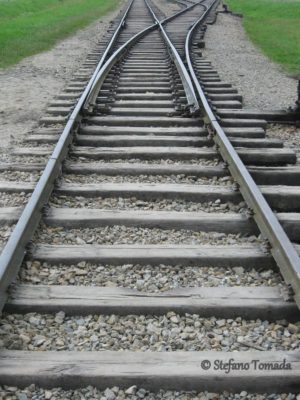
Birkenau, the railway
For the transfer, breaks, and the visit to both camps, you should allocate a good part of the day.
For Wieliczka, on the other hand, a few hours are sufficient because the site is located right on the outskirts of the ancient capital of Poland.
In this article, we provide you with a series of practical tips and useful information for visiting Auschwitz from Krakow.
The rest will be done by your sensitivity and your heart.
Table of Contents
- Krakow Free Tour
- Auschwitz, Organized Tours from Krakow
- Where is Auschwitz Located
- Historical Overview
- Auschwitz, Self-Organized Visit
- How to Reach Auschwitz from Krakow
- Currency in Poland
- Recommended Reads
Krakow Free Tour
Before visiting Auschwitz, we recommend participating in the Free Tour of the Jewish Quarter in Krakow.
During the walk, you’ll gain interesting insights into the history and traditions of the city’s Jewish community.
To ensure the quality of the activities we promote on the blog, we personally tried the tour. It is well-structured, rich in details and curiosities.
It lasts about two and a half hours, the guide speaks English, and the walk begins in Mały Rynek, located just behind the Basilica.
The activity doesn’t have a predetermined fee, but if you have enjoyed the experience, we recommend leaving a tip for the guide at the end.
You decide the amount on the spot. By clicking on the links, you can already sign up comfortably from home.
One recommendation: the tours have a limited number of spots. If for any reason you are unable to participate, please cancel the reservation, giving others the opportunity to take part. Thank you.
Auschwitz, Organized Tours from Krakow
The visit can be done independently or by joining a tour organized by a local agency.
The excursion lasts over seven hours, and the fee includes transportation from Krakow, entrance tickets to both camps, and an English-speaking guide.
The excursion is one of the most requested, and availability quickly runs out, which is why we recommend considering the Auschwitz tour from Krakow offered by Get Your Guide.
It is one of the most requested and positively evaluated activities by participants.
Where is Auschwitz Located
Oświęcim is a charming industrial town of forty thousand inhabitants, located at the western end of the Voivodeship of Lesser Poland.
For decades now, the city has been a constant stream of people—hundreds, thousands, millions.
They come from afar, from all parts of the world; some are students, and most are tourists.
It would all be beautiful if it weren’t for the fact that the place is primarily known by its German name, Auschwitz.
And here begins a completely different story.
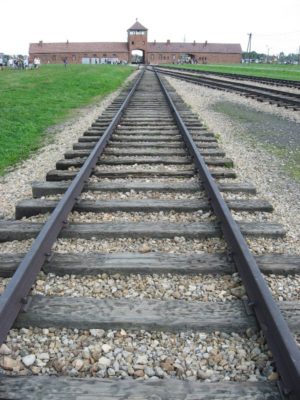
Birkenau Extermination Camp
Historical Overview
The town was occupied by Nazi Germany troops at the beginning of the Second World War.
In May 1940, the Germans converted some barracks of the Polish army into a concentration camp that became known as Auschwitz I.
In a few months, the complex expanded to include the extermination camp Auschwitz II – Birkenau (Brzezinka in Polish) and the labor camp Auschwitz III – Monowitz (Monowice).
In the latter location, the Buna-Werke factory, owned by the German chemical giant I.G. Farben, was built to produce synthetic rubber.
Nowadays, there is no trace left of the Monowitz site, except for a commemorative plaque.
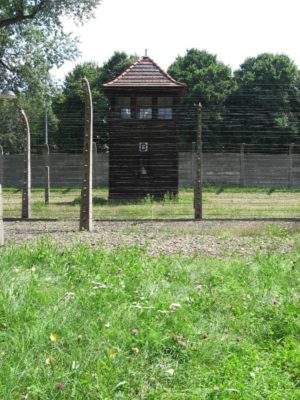
Auschwitz, Guard Tower
Auschwitz, Self-Organized Visit
As of January 2, 2018, a new regulation is in effect.
Before booking your visit, we recommend checking for updates and guidelines on the official website of the Auschwitz-Birkenau State Museum.
Ticket Reservation
The museum’s regulations stipulate that reservations for the visit can be made starting three months before the planned date.
Reservation is mandatory and must be done online, even for self-guided tours.
Upon accessing the museum’s website, you can choose between a guided tour with an educator (which we recommend) or a self-guided tour.
In both cases, it is necessary to book well in advance because the number of slots for each time and language is limited. Access to the museum without a reservation is not possible.
The cost of a ticket for a guided tour in a foreign language is 110.00 złoty, while it is 100.00 złoty for students up to 26 years of age (with a valid student ID).
Entrance to the camps for self-guided visits is free.
The fees are updated as of January 2025.
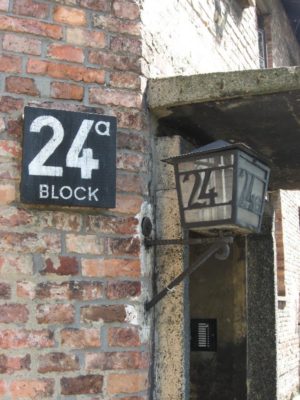
Auschwitz, Block n°24
Auschwitz, English Guided Tour
As mentioned, the visit can be conducted with a guide or independently.
If you haven’t booked in advance or couldn’t find available slots for the English-guided tour on the museum’s website, no worries.
You can easily do so at the following link: Guided Tour of Auschwitz-Birkenau.
The activity takes place among the various blocks, and with the help of headphones, you can listen to the guide’s explanations. The tour lasts approximately two hours.
At the end, you head towards Birkenau. The two camps are three and a half kilometers apart.
A free shuttle service operates between the two sites, running every ten to fifteen minutes from April to October, and every half hour in the winter months.
The visit to the Birkenau extermination camp lasts about an hour. Afterward, you take the shuttle bus back to the square adjacent to the Auschwitz camp.
Access to the camps is prohibited with bags, backpacks, and knapsacks that exceed the dimensions of 35 x 25 x 15 centimeters. Otherwise, they must be left at the paid luggage storage.
The museum management advises against visits for children under the age of 14.
However, the decision to bring children is left to the sensitivity and responsibility of the parents.
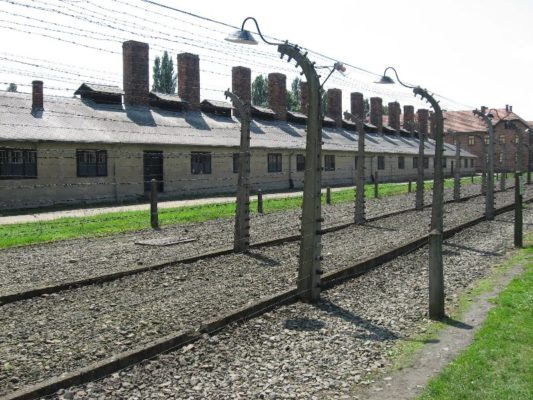
Auschwitz I
Visiting Hours
The museum opens every day at 7:30 AM. The closing times are as follows:
– 2:00 PM in December
– 3:00 PM in January and November
– 4:00 PM in February
– 5:00 PM in March and October
– 6:00 PM in April, May, and September
– 7:00 PM in June, July, and August
These are the museum’s entry hours. Visitors can stay in the camps for 90 minutes beyond the last entry time (for example, until 3:30 PM in December).
The museum is closed on Christmas, Easter, and New Year’s Day.
How to Reach Auschwitz from Krakow
Oświęcim is about seventy kilometers from the center of Krakow.
If you want to reach it independently, you have the following options:
By Car
From the South:
Exit the city through the major arteries in the direction of Zakopane.
Take the A4 highway at the Zakopiański entrance, and after a few kilometers, exit at Sidzina.
Take the national road No. 44, passing through the towns of Skawina and Zator until you reach your destination. The short stretch of highway included in this route is toll-free.
From the West:
Exit Krakow from the Salwator district, and along the Vistula River, continue on provincial road No. 780.
Pass through the towns of Bielany, Liszki, Kaszów, Brodła, Alwernia, and Kwaczała. Shortly after Kwaczała, turn left onto provincial road No. 781 and reach Zator.
Once there, turn right onto national road No. 44 and continue until you reach your destination.
From the Northwest:
Exit the city through ulica Focha (where the K.S. Cracovia stadium is located, just to be clear).
Continue on ulica Królowej Jadwigi, ulica Junacka, ulica Chełmska, and ulica Olszanicka.
The road ends at a roundabout; turn right and, following provincial road No. 774 for about a kilometer and a half, you will reach Krakow – Balice Airport.
Near the airport, enter the A4 highway towards Katowice, pay the toll at the toll booth, and after 28 kilometers, exit at Chrzanów.
Take national road No. 79 towards Chrzanów. Once you reach the town, continue on provincial road No. 933 towards Libiąż and Oświęcim.
If you don’t have your own vehicle during your travel in Poland, we recommend renting one, as we did.
As usual, we relied on DiscoverCars and picked up the car at Krakow Airport.
Thanks to the “free cancellation” option, we were protected until the day before in case of any last-minute changes.
By Train
A good alternative to traveling by car is provided by train connections.
Keep in mind that the Oświęcim train station is a couple of kilometers away from the Auschwitz I concentration camp.
To reach it, you’ll need to take a considerable walk or rely on local public transportation.
Especially during the winter months when the cold is biting, we recommend the latter option.
On the Polish Railways website, you can check the schedules, types of trains, and purchase tickets online where available.
In the search form, fill in the departure and/or arrival fields with “Kraków Główny” and “Oświęcim.”
As purely informative data, an Intercity train takes about an hour and a quarter to cover the journey, while a Regional train takes approximately two hours.
By Bus
Certainly, the most convenient way to get to Auschwitz from Krakow is by bus.
From the Krakow bus station, several daily routes depart, even on holidays.
The journey takes about one hour and twenty minutes, and the ticket cost is really economical compared to the standards we are used in Western Europe.
Private minibusses to Oświęcim also depart from the vicinity of the bus station and other strategic points in the city.
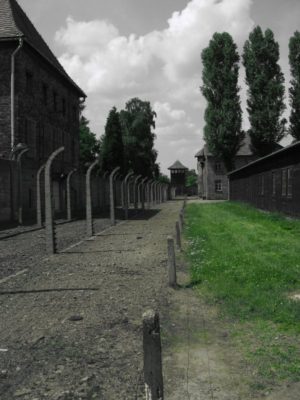
Auschwitz I
Currency in Poland
The currency used in Poland is the Złoty (PLN), divided into 100 Groszy.
The most convenient way to exchange Euros is to visit the numerous exchange offices in the city, called “Kantor” in Polish.
The exchange rate can fluctuate, both positively and negatively, even within the same day.
Withdrawals through ATMs are not cost-effective, as banks often apply high fees.
Recommended Reads
“If This Is a Man” and “The Truce”, both written by Primo Levi.
0 Comments